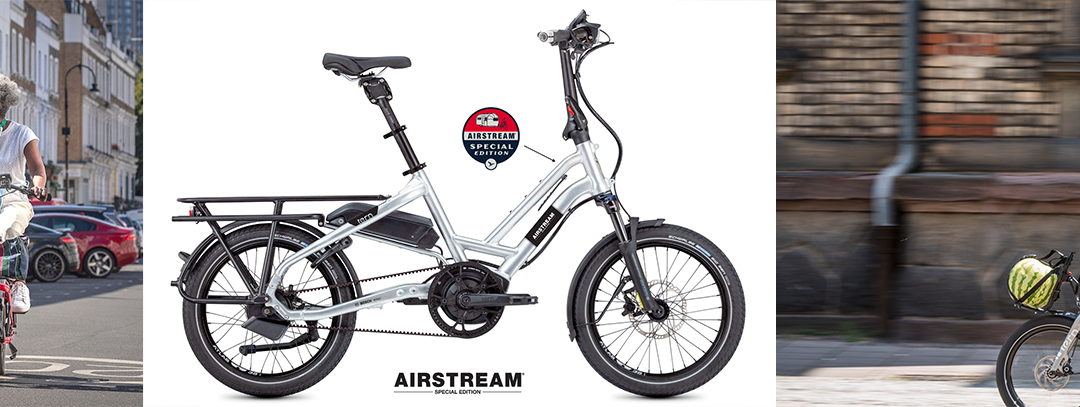Let’s look at:
- Why add solar panels?
- How much solar do I need?
- What makes up a solar system?
- How can you store solar energy?
- What are the options for batteries?
- Monitoring batteries
Why add solar panels?
The benefits of adding a solar energy collection system to your Airstream include being able to camp comfortably where there are no electrical hookups. Some of these include:
- Bureau of Land Management (out west) camping
- Primitive national park camping
- Harvest Host/Boondockers Welcome camping
- Friends’ driveways
- Small town city parks
- Interstate rest stops (where permitted)
- Business parking lots (Cracker Barrel, Walmart, Cabela’s, etc.)
How much solar do I need?
It will depend on how you plan to use your Airstream: extended dry camping vs. just maintaining the batteries. There are two electrical systems on most Airstreams built after the 50s. The 12 v DC (Direct Current) system and the 120 volt AC (Alternating Current) system. The 12 v DC system powers things like fans, lights, controls of the refrigerator and water heater, water pump, the furnace fan, cooktop and bathroom fans. The 120 v AC system power electric coffee pots, toaster, hair dryer, TV(s), stereo, portable fans and heaters and the microwave.
You can estimate your daily DC consumption by making a list of devices and list the ratings for watts (energy), voltage (volts), current (amps) from the label on the device. Also list the amount of time you typically run the appliance in fractions of an hour. Then multiply the current (A) by the hours of use will give you the daily amp-hours (Ah) consumed by each appliance. Total them all up and you get your average daily energy use in DC Ah. As an example, if your water pump draws 6 amps at 12 vdc, and your cumulative daily operation is 30 minutes, then 6a x 0.5hrs = 3 Ah. A typical combination of DC devices will need between 35 and 75 Ah per day.
If you want to run the AC appliances in your camper, you need to install an inverter. The inverter takes DC energy from the batteries and creates AC (Alternating Current). Since the batteries are supplying energy for the inverter at 12 v DC, we need to multiply the rated AC current value by 10 to get the equivalent current at 12 v DC. Using the same process as in the paragraph above, list all of the AC appliances you plan to use, the current (A) at 12 v DC, that each consume when operating, and multiply by the time they will operate in fractions of an hour. A typical combination of AC appliances will need between 75 and 150 Ah per day at 12 volts.
What makes up a solar system?
A solar system is made up of the following components:
Solar panels, solar controller, panel mounting and combiner box, fuse and circuit breakers for protection.
There are two types of solar panels widely available today: flexible and rigid panels. Flexible panels work well for curved or uneven surfaces, are lower profile, and are lighter than rigid panels. Unfortunately, if they are mounted directly on the Airstream roof, they get very hot on blazing summer days, and lose efficiency at high temperatures.
The other type of panel is rigid monocrystalline panels. Advantages of rigid panels include: available in many different sizes and voltages, are lower in cost/watt, are extremely durable, can be mounted above the roof surface to allow better air movement, provide shade for the roof and have a long service life.
Rigid panel manufacturers have developed a variety of sizes and shapes to fit in the spaces available on the roof of our Airstreams.
Since the typical 12 volt panel puts out between 18 and 21 volts DC, we need a way to regulate the voltage to safely charge our batteries. There are two types of solar controllers: PWM (pulse width modulated) and MPPT (maximum power point tracking). PWM is the legacy controller, and historically have been less expensive, and very compact. MPPT controllers are now mainstream, and provide up to 30% increased energy collection, especially in less than perfect solar conditions, and are available in a wide range of voltages.
A typical installation will use a combiner box to merge all of the individual panel cables into one larger duplex cable that runs to the solar controller. It is recommended that circuit breaker protection be in-stalled on both the input and output of the solar controller.
How can you store solar energy?
Electricity is real-time energy, and either need to be used at the time it is generated, or is lost. So, we add batteries to our RVs to be able to store the solar energy harvested during the day, and use it at night or on the next cloudy day.
There are two primary battery technologies used today. Lead acid – in flooded cell batteries, AGM batteries, and GEL batteries. All of these lead acid technologies have these characteristics: Heavy, some require regular maintenance, only allow 50% of rated capacity to be safely used, have quite high self-discharge rates, limited charge rates, and have poor weight-to-energy ratio. They do have lower initial cost, and are widely available.
The new technology for RV batteries is based on lithium iron phosphate technology. Lithium-based RV batteries are safe, go further-allow 95 to 100% discharge, they weigh about half of lead acid batteries, live an average 10 times longer than lead acid batteries. They are maintenance free and can be mounted in any orientation. Most lithium batteries have built in Battery Management Systems (BMS) that protect the battery from harm. The only limitation for lithium batteries is that they don’t like to be charged below freezing temperatures. Most manufacturers now offer options for self-heating batteries if you plan to winter camp.
Monitoring Batteries
As we camp, we consume energy from the batteries to operate our various devices and appliances. It is important to know how much battery energy is remaining. For the lead-acid batteries, we can read the voltage and get a good idea of the remaining energy in the battery bank.
Lithium batteries have a very flat voltage/capacity curve, and you can’t accurately figure out capacity by reading the voltage. So, the best way to measure the energy used is to use a shunt-based battery monitor. The shunt is typically installed in the negative side of the DC wiring at the battery. It accurately measures all of the current into and out of the battery bank. It is also connected to the positive terminal of the battery to provide power to the shunt and measure the voltage of the battery. Having both current and voltage, the shunt can calculate watts, Ah, and display volts, amps, percent full, and time remaining at the current usage.
Summary
Why solar? Well, it provides a cost-effective way to power an RV and charge the batteries. We have been looking at installing solar panels on the roof of the Airstream. The advantage of using roofmounted solar is that it is always on, is safe from most sticky fingers, and operates as you travel down the road. Another option to consider is to use a portable/foldable solar panel. Densities are continually increasing, and weights are coming down. And, with an extension cord, you can move it out of the shade and into the sun. You do also need to secure the panel, and depending on how you deploy it, may need to move it to keep it in direct sun.
If you have technical questions or comments, please send them to techhelp@wbcci.org.
Happy Camping!




